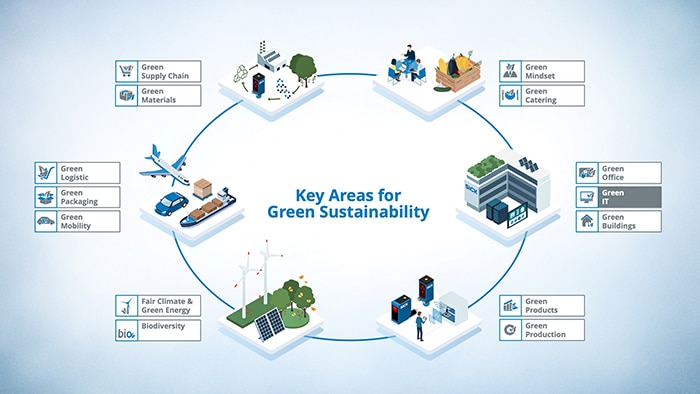Why SICK is taking action
According to current estimates, information and communications technology requires about 4 percent of the world's electricity. In addition, video streaming, social media, big data, artificial intelligence, and the digitalization of business processes and production workflows are leading to a global increase in energy consumption, and thus CO2 emissions. In addition, metals (including silver, gold, copper, lithium) and rare earths (e.g. neodymium, tantalum) are used to produce IT equipment. These have a negative impact on the environment as they are usually mined under uncontrolled conditions. These examples show why IT also offers significant potential for optimization in terms of environmental sustainability.
How SICK defines “Green IT”
“Green IT” is the term we use to describe energy-efficient and environmentally-friendly information and communication technology at SICK. A distinction is made between “green in IT” and “green with IT”:
“Green in IT” includes, among other things, the use of energy-saving IT equipment and the optimization of resource requirements at the workplace and for server cooling. SICK also attaches great importance to a sustainable life cycle for IT devices, from procurement to recycling. With low-resource and energy-efficient processes, such as server virtualization and standardization of applications to reduce server and energy load, we are also trying to focus on ecological sustainability in the IT department.
“Green with IT” at SICK includes the use of IT infrastructure to reduce our CO2 footprint. This include video conferencing systems to replace unnecessary business trips or IT equipment for mobile work in home offices. It also promotes collaboration across departments, driving the digitalization of business processes throughout the company.
